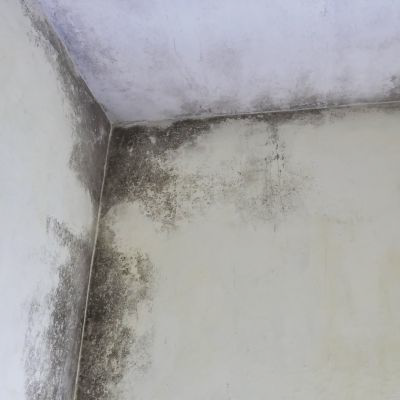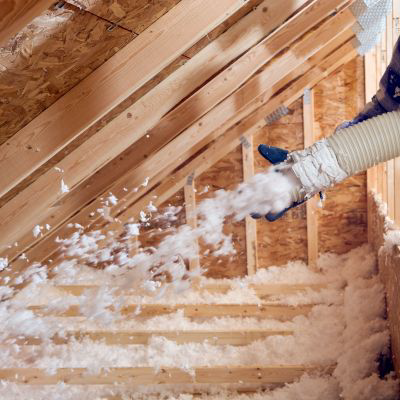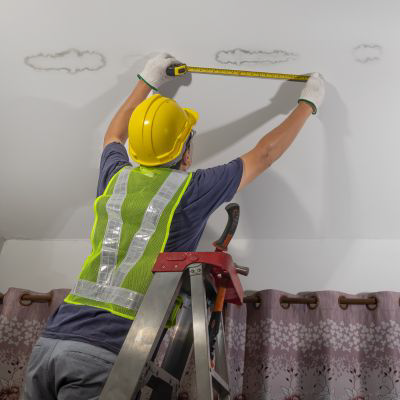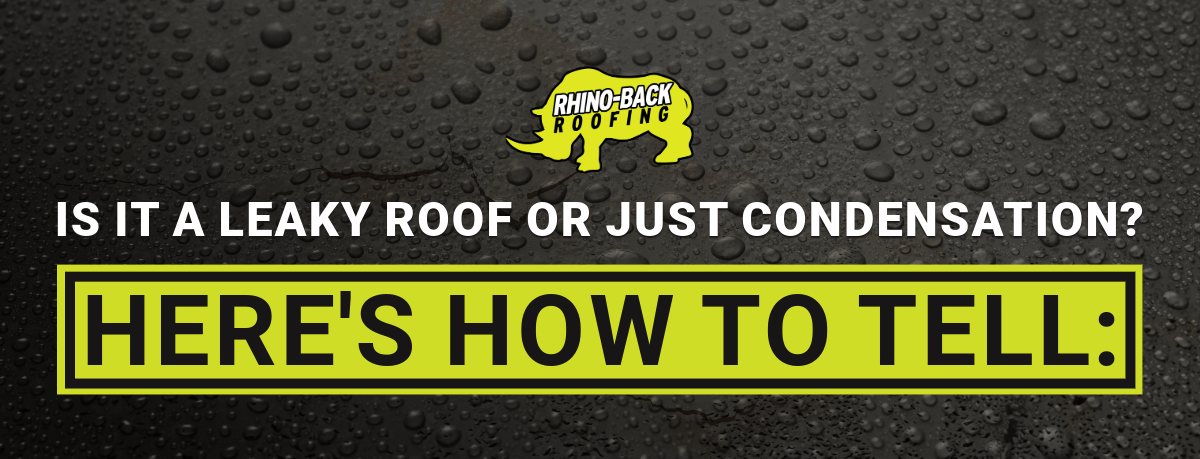Have you ever observed what you think is water staining on the ceiling of your living room, kitchen, bedroom, laundry room, hallway, or bathroom? Maybe you’ve come across unexplained water spots in your attic. Or perhaps you’ve seen what you believe is condensation forming in corners or along walls.
There is a difference between a water leak and condensation. However, as a homeowner, you may have difficulty discerning between the two. You have the crucial responsibility to involve a professional to identify the source of the “water staining” so that you can take the appropriate remedial action.
A leaky roof is a major concern for any homeowner. More often than not, it eventually results in water stains forming in a home’s interior spaces. Unfortunately, if you spot water stains, you may have more significant problems, including mold or mildew formation and structural damage.
What Is Condensation? How Does Condensation Form?
Condensation occurs when water vapor turns into liquid. It is the opposite of evaporation. Condensation forms in one of two ways: (i) air becomes so saturated with water vapor that it can no longer hold additional water, and (ii) air is cooled to its dew point (the temperature where condensation happens). If condensation is not remediated quickly, damp patches will form on hard surfaces. Eventually, they evolve into mold and mildew growth (appearing as dark or black spots). Removing mold can be extremely difficult to accomplish.

Identifying Water Stains From Condensation
How do you know that the water stain you observe results from condensation and not a roof leak? It isn’t always easy to spot the difference. However, consider the following factors as crucial indicators of condensation (as opposed to a leaky roof) when evaluating the origins of a water stain:
- No external source of moisture leaking into the home is discovered.
- The stain appears when it has not rained or snowed recently.
- The stain is not the result of ice or snowmelt.
Excess condensation is one of the leading causes of ceiling stains. Ironically, it often results from inadequate insulation around improperly installed vent pipes and roof caps. If these roofing features do not form an airtight connection, they allow moisture to seep through, permitting condensation to develop. Similarly, inaccurately installed ducts may produce condensation along walls and on ceilings. This problem arises much more frequently during warmer, rainier, and more humid times of the year.

Spotting Water Staining Due To A Leaky Roof
Timing is everything. If you observe fresh water stains on your ceilings or walls within 24-48 hours following a rain or snowstorm (or significant ice or snowmelt occurs), the likely culprit is a leaky roof. Somehow, moisture has penetrated through the roof and entered the home. To verify the source of the problem, you should contact a trusted roofing contractor as soon as reasonably possible to perform a thorough inspection.
Assuming you can safely access your attic or crawlspace, check to see if moisture is present. For example, if the insulation has damp spots immediately above the locations where you observe water stains, more likely than not, a roof leak exists. Thereby, the water stains are not likely a result of excess condensation. Additionally, if you feel moisture on the underside of the roof deck, you probably can rule out condensation.

Gravity dictates where water travels. If your home’s flashing is not air or watertight, rain or snowfall will lead to moisture intrusion through loose, missing, or damaged flashing. Flashing must be appropriately fitted around all roof protrusions, including chimneys, plumbing vents, skylights, and roofing vents. Flashing also needs to be correctly installed in roof valleys, seams, and joints to prevent water penetration.
3 Proactive Steps To Address A Leaky Roof
(1) Identify The Original Source Of The Leak
Address the situation promptly. Hire a reputable roofing professional who can facilitate a comprehensive roofing inspection. Allow them full access to all areas of your home to trace the leak from its endpoint to its original location.
(2) Fix The Root Cause Of The Leak
Once the source of the roof leak has been identified, document the issue and retain a roofing contractor specializing in roof replacements. Stick with a knowledgeable professional.
(3) Clean Up Damage And Disinfect
The roof leak likely caused significant interior damage. For example, the sublayers of the roof may need replacement. Areas of insulation might require addressing. Wet spots on ceilings or walls should be scrubbed and disinfected.
Hiring A Knowledgeable Roofing Contractor
Homeowners in Simsbury, CT (and surrounding communities) benefit from having a knowledgeable roofing professional to assist them when water stains appear inside their homes. At Rhino-Back Roofing, we provide unmatched expertise in evaluating the source of unsightly ceiling, wall, and floor stains.
We can identify the reasoning behind what you observe. If the issue results from a roof leak, we provide the right solutions (including roof repairs or a replacement) for any situation. Trust us to deliver helpful guidance to address water stains once and for all. To schedule an appointment, contact Rhino-Back Roofing today!

